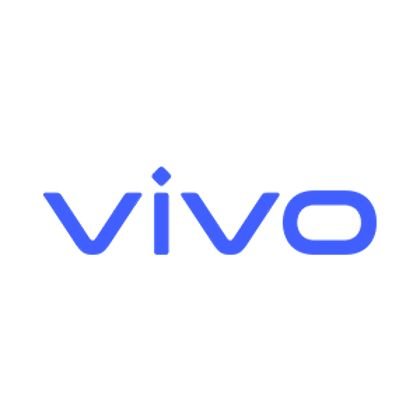
As organizations increasingly migrate their data and applications to the cloud, ensuring robust cloud security has become a top priority. Cloud environments are inherently dynamic, and their security requires constant monitoring to detect vulnerabilities, threats, and potential breaches. Fortunately, there are several tools available that provide comprehensive monitoring and security management for cloud infrastructures. Here’s a look at some of the top tools for monitoring cloud security in 2024.
1. Microsoft Azure Security Center
Overview:
Azure Security Center is a unified security management system for Azure cloud services. It provides advanced threat protection, security posture management, and integrates with other Azure security solutions.
Key Features:
- Continuous Security Assessment: Regularly evaluates the security status of your Azure resources, identifying vulnerabilities, missing patches, or security misconfigurations.
- Advanced Threat Protection: Detects threats with machine learning algorithms, behavioral analytics, and anomaly detection.
- Compliance Management: Provides compliance assessments for standards like GDPR, ISO 27001, and NIST.
- Integration with SIEM Solutions: Integrates with Azure Sentinel and third-party security information and event management (SIEM) tools for deeper analysis.
Why Use It:
Azure Security Center offers comprehensive security monitoring for Azure workloads, providing insights and alerts on potential threats. It is ideal for organizations heavily invested in the Microsoft ecosystem.
READ MORE: Top 5 Crypto Trends to Watch in 2024
2. AWS Security Hub
Overview:
AWS Security Hub provides a centralized view of your security state across AWS accounts. It aggregates and prioritizes security findings from various AWS services like Amazon GuardDuty, Amazon Inspector, and AWS Identity and Access Management (IAM).
Key Features:
- Centralized Dashboard: Offers a single pane of glass to view security alerts and compliance status.
- Automated Compliance Checks: Continuously checks your environment against industry standards like PCI DSS, GDPR, and HIPAA.
- Integration with AWS Services and Third-Party Tools: Seamlessly integrates with other AWS security services and external tools for a comprehensive security view.
- Automated Remediation: Supports automation of response actions through AWS Lambda or Amazon CloudWatch Events.
Why Use It:
AWS Security Hub is ideal for organizations that use AWS as their primary cloud platform. It provides a comprehensive overview of your AWS security posture and integrates natively with other AWS services.
3. Google Cloud Security Command Center (SCC)
Overview:
Google Cloud Security Command Center (SCC) is a security and risk management platform for Google Cloud. It provides a unified view of your cloud assets and their security state, helping you detect and respond to threats.
Key Features:
- Asset Inventory Management: Automatically discovers and inventories all your Google Cloud resources.
- Threat Detection and Alerts: Detects potential threats using built-in security analytics, threat intelligence, and machine learning.
- Compliance Monitoring: Tracks and reports compliance with various regulatory standards.
- Integration with Security Tools: Integrates with third-party security tools like Palo Alto Networks, McAfee, and Splunk.
Why Use It:
SCC is particularly suited for organizations running on Google Cloud Platform (GCP). It provides a centralized solution for monitoring cloud security, identifying risks, and ensuring compliance.
READ MORE: 5 MMO Games You Should Try If You Love GTA 5
4. Palo Alto Networks Prisma Cloud
Overview:
Prisma Cloud, by Palo Alto Networks, is a comprehensive cloud-native security platform that provides visibility, threat detection, and compliance management for multi-cloud environments, including AWS, Azure, and GCP.
Key Features:
- Cloud Security Posture Management (CSPM): Continuously monitors cloud resources to detect misconfigurations, vulnerabilities, and compliance issues.
- Cloud Workload Protection (CWP): Secures cloud-native applications across containers, serverless functions, and virtual machines.
- Identity and Access Management (IAM) Security: Monitors and enforces IAM policies to prevent identity-based threats.
- Threat Detection and Incident Response: Uses machine learning and threat intelligence to detect and respond to threats in real-time.
Why Use It:
Prisma Cloud is ideal for organizations operating in multi-cloud environments. It offers a single platform to monitor and secure workloads across different cloud providers, reducing complexity and enhancing visibility.
5. CrowdStrike Falcon Horizon
Overview:
CrowdStrike Falcon Horizon is a cloud-native platform security solution that provides visibility, threat detection, and automated remediation for workloads across AWS, Azure, and GCP.
Key Features:
- Continuous Visibility and Monitoring: Provides real-time visibility into cloud assets, configurations, and potential threats.
- Threat Intelligence and Analytics: Utilizes CrowdStrike’s threat intelligence to identify and prioritize risks and vulnerabilities.
- Compliance and Configuration Monitoring: Monitors cloud configurations for compliance with industry standards and best practices.
- Automated Remediation: Supports automated response and remediation actions to fix misconfigurations and mitigate threats.
Why Use It:
CrowdStrike Falcon Horizon is suitable for organizations seeking a proactive approach to cloud security, focusing on both detection and automated response to threats.
6. Datadog Cloud Security Platform
Overview:
Datadog’s Cloud Security Platform provides security monitoring, threat detection, and compliance management for cloud environments. It integrates seamlessly with the Datadog observability suite, offering a comprehensive view of both performance and security.
Key Features:
- Security Monitoring: Monitors security events and detects anomalies in real-time across all cloud workloads.
- Threat Detection and Analytics: Uses machine learning models to identify suspicious activity and potential threats.
- Compliance Monitoring: Tracks compliance with standards such as SOC 2, HIPAA, and GDPR.
- Seamless Integration: Integrates with existing DevOps tools, SIEM platforms, and other Datadog products for unified monitoring.
Why Use It:
Datadog is ideal for organizations already using its observability suite, as it combines performance monitoring and security insights into a single platform.
READ MORE: Best AI Vocal Removers for DJs and Remix Artists
7. Qualys Cloud Security
Overview:
Qualys Cloud Security is a platform for securing cloud environments by providing visibility into assets, detecting vulnerabilities, and ensuring compliance with security standards.
Key Features:
- Continuous Monitoring: Provides real-time monitoring of cloud assets, configurations, and traffic to detect vulnerabilities and threats.
- Vulnerability Management: Identifies and prioritizes vulnerabilities across all cloud workloads.
- Compliance Auditing: Automates compliance checks for standards like PCI DSS, ISO 27001, and CIS Benchmarks.
- Integration with Cloud Providers: Works with AWS, Azure, GCP, and other cloud platforms.
Why Use It:
Qualys Cloud Security is suitable for organizations looking for a comprehensive solution to manage vulnerabilities and ensure compliance across multi-cloud environments.
8. Splunk Cloud Security Monitoring
Overview:
Splunk is a powerful security information and event management (SIEM) tool that offers advanced analytics and monitoring for cloud security. It provides real-time insights into cloud activity and helps detect threats quickly.
Key Features:
- Advanced Threat Detection: Uses machine learning and threat intelligence to detect and respond to security incidents.
- Cloud-Specific Monitoring: Provides tailored security monitoring for AWS, Azure, and GCP environments.
- Customizable Dashboards and Alerts: Allows users to create custom dashboards and alerts for specific security events or compliance needs.
- Integration with Third-Party Tools: Easily integrates with other security tools, cloud services, and infrastructure platforms.
Why Use It:
Splunk is ideal for organizations needing a versatile and powerful tool to handle large volumes of security data, analyze threats, and meet compliance requirements.
9. Check Point CloudGuard
Overview:
Check Point CloudGuard is a cloud-native security platform that provides advanced threat prevention, security posture management, and automated compliance checks across multi-cloud environments.
Key Features:
- Threat Prevention: Offers comprehensive protection against threats, including malware, zero-day attacks, and advanced persistent threats (APTs).
- Automated Compliance and Reporting: Continuously monitors cloud environments for compliance with standards like GDPR, PCI DSS, and HIPAA.
- Security Posture Management: Identifies misconfigurations and vulnerabilities in cloud environments and provides remediation guidance.
- Integration with DevOps Tools: Seamlessly integrates with CI/CD pipelines and DevOps tools to enforce security throughout the development lifecycle.
Why Use It:
CloudGuard is suitable for organizations looking for a robust security solution with advanced threat prevention capabilities and strong DevOps integration.
READ MORE: Top Smartphones to Buy Under ₹40,000 in 2024
10. McAfee MVISION Cloud
Overview:
McAfee MVISION Cloud provides comprehensive security management for SaaS, IaaS, and PaaS environments. It offers visibility, threat protection, data loss prevention (DLP), and compliance monitoring.
Key Features:
- Unified Visibility: Provides a single pane of glass to monitor cloud usage, configurations, and security events across different environments.
- Data Loss Prevention (DLP): Protects sensitive data from unauthorized access or leaks.
- Threat Detection and Response: Identifies and responds to threats using AI-driven analytics and behavior analysis.
- Compliance Monitoring: Helps ensure compliance with industry regulations and standards.
Why Use It:
McAfee MVISION Cloud is ideal for organizations that need comprehensive cloud security management, including DLP and compliance monitoring, across multiple cloud platforms.
Conclusion
Choosing the right tool for monitoring cloud security depends on your organization’s specific requirements, the cloud environments you are using, and your overall security strategy. Whether you are looking for a tool that integrates seamlessly with your existing cloud provider (such as AWS Security Hub, Azure Security Center, or Google Cloud SCC) or a more comprehensive solution that works across multiple cloud environments (like Palo Alto Networks Prisma Cloud or CrowdStrike Falcon Horizon), there is a range of options to fit your needs.
By leveraging these tools, organizations can gain greater visibility into their cloud environments, detect and respond to threats more effectively, ensure compliance with regulatory standards, and ultimately strengthen their cloud security posture.









